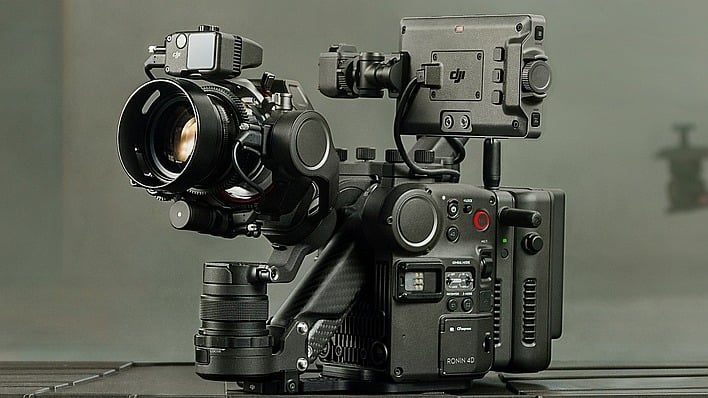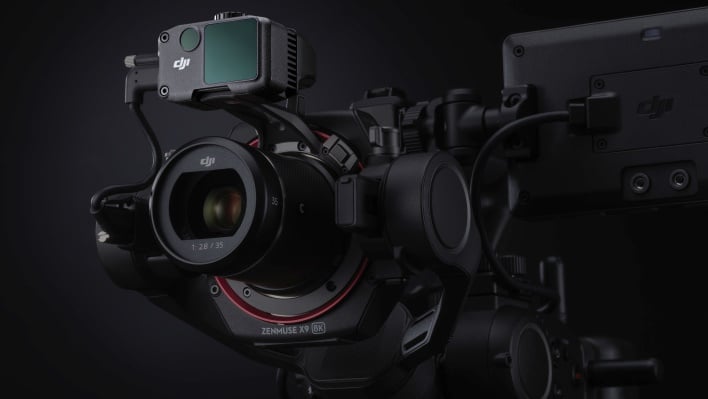DJI's Ronin 4D With LiDAR And Built-In Gimbal Is World's First 4-Axis 8K Cinema Cam

We don't talk about specialty cameras much around these parts, usually because those discussions require deep technical detail, full of industry jargon about the optical characteristics of the device. That's not the case when talking about DJI's new Ronin 4D cinema camera, though. Sure, we could talk about the ultra-wide aperture and support for third-party lenses, its full-frame 8K sensor, and how it supports up to ISO 5000 for low-light shooting. That stuff isn't nearly as interesting as the real standout features on the Ronin 4D, namely its LIDAR-based autofocus system, its four-axis image stabilization tech, and the proprietary processor that controls it all.
DJI claims that the Ronin 4D is the first camera with "active Z-axis" stabilization, and based on its example footage, that claim seems legit. Despite being a rather small handheld camera rig—much smaller than it looks in the stand-alone pictures; see below—the footage coming out of the Ronin 4D looks like it's being recorded on a dolly.

In addition to the impressive stabilization, the Ronin 4D also uses neural-network-powered technology to automatically track subjects on the move, allowing for complex tracking shots in a single take. That includes adjusting scene composition, including the focus of the shot, automatically. Focus adjustment is done using a bespoke LiDAR range finder that hits 43,200 ranging points out to ten meters, allowing for extremely precise measurement of distance and location of subjects without relying on surface textures or "hunting for edges."

That box above the lens is the LiDAR module.
You don't have to use auto-focus if you don't want to, though, and the LiDAR module still doesn't go wasted if you prefer to do it yourself. In manual mode, the LiDAR module can still provide a readout of the distance to its focus points, allowing you to focus with high precision quickly, and in addition to the traditional fully-manual mode, DJI also offers a mode called "Automated Manual Focus" which is essentially auto-focus with support for manual adjustments at any time.

A big pile of accessories for the Ronin 4D.
Depending on which model you get, the full-frame sensor on the Ronin 4D supports 6K or 8K video at up to 75 frames per second. It also supports a pile of attachments, from an extra connections module with TC, 3G-SDI, and XLR ports, a wireless auto-focus module that even supports older manual-focus lenses, to extra batteries and even a 1TB SSD for local media recording in the highest quality (otherwise, you're using the built-in CF Express card slots or your own USB Type-C storage device.)
We could go on forever about the features of this new camera, but if you're really interested you should probably check out the company's product page for the Ronin 4D, which goes over its features in exhausting detail. The 6K version of the Ronin 4D starts at $7,199 USD, while the 8K version includes a 1TB SSD and starts at $11,499—although the company advises that these prices are "just for reference" and that actual pricing may vary.

